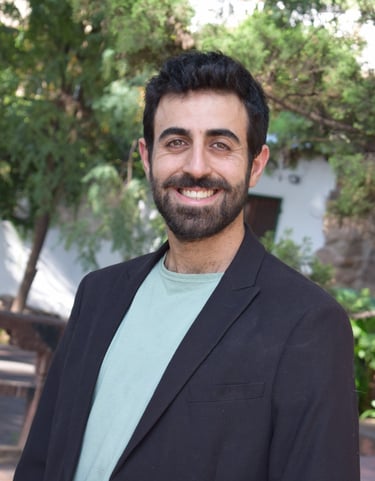Marḥabā!
I’ve taught Arabic full-time for over 6,000 hours — and one question kept challenging me:
Why is Arabic so often taught in a rigid, lifeless way — disconnected from real human experience?
This school is my answer.
A space for deep, evolving learning — not textbook drills. A space rooted in real connection, rhythm, and meaning.
I’m not just a teacher, I’m a language learner too. Every method I teach, I’ve tested on myself first. What worked for me, I now refine with my students. And over the years, a clear path has emerged — a method built on three stages of “how”:
🔹 Beginners – How to Build
We start with gradual sentence-building, one step at a time.
Clear slides. High repetition. Constant small tests.
Foundations first — strong, slow, and steady.
🔸 Intermediates – How to Tell
Storytelling isn’t one skill — it’s many:
memory, emotion, rhythm, clarity, structure.
We learn to turn language into a meaningful voice.
🔺 Advanced – How to Negotiate
Real fluency is adaptation — the ability to shift, respond, and still preserve meaning.
Dialogue is negotiation. And negotiation is an art.
My goal is simple:
To guide you from zero to fluency — until we’re no longer teacher and student, just two people speaking Arabic as friends.


Mohammad Awad
Our mission What we do, how we do it
At Lisan al-Arab, our mission is to make spoken Arabic and culture accessible and attainable for every student. We are committed to guiding learners from their first words to true fluency through a curriculum that balances structure with flexibility. We continually refine our methods based on experience and evidence, ensuring that learning remains effective,meaningful and fun!.
Our responsibility is not only to teach language and culture, but also to support, coach, and accompany each student with care and dedication on their path to mastery.
Our vision Why we do it, and where it leads
Our vision is to become a trusted school where learning Arabic is more than mastering a language — it is a path to meaningful connection with culture and people. We aim to lead students beyond efficiency and fluency, toward becoming cultural bridges who engage with the Arab world with understanding, respect, and confidence.
Connect
alawad.mohammadmh@gmail.com
+543875857912
© 2025. All rights reserved.
